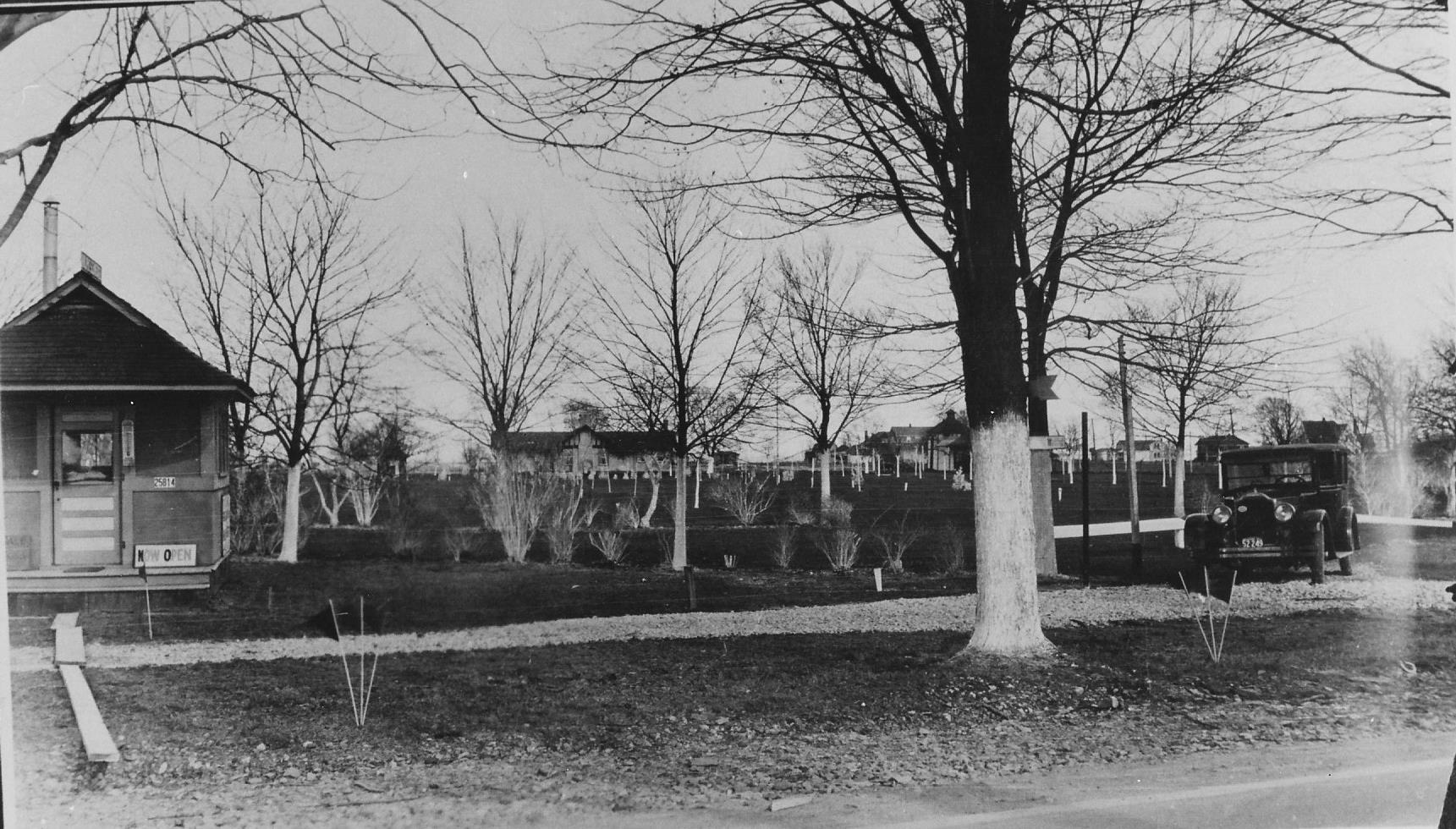——————————————————————————————————————————————————————— |
||||||
——————————————————————————————————————————————————————— |
||||||
Hours of Operation
Monday - Thursday
9:00AM - 9:00PM
Friday - Saturday
9:00AM - 5:00PM
Sunday
Closed
Holiday Hours
Saturday, November 11
Closed
—————————
Looking Back at St. Clair Shores
2023 Articles |
|||||||||||||
Looking Back at St. Clair Shores is a series of historical articles featured most months in the St. Clair Shores Sentinel newspaper. Unless noted otherwise, the photographs used are part of the St. Clair Shores Historical Commision's Photograph Collection. These photographs, along with many others, are available to view through the Digital Media Archive. Previous articles can be found by clicking on the year. |
|||||||||||||
St. Clair Shores Golf Course Construction |
|||||||||||||
In 1926, an 18-hole golf course for the Detroit Masonic Country Club was started on the north side of Masonic Boulevard. It would be the Club’s second course, and would open in August, 1929. Later in 1929, severe storms damaged the DMCC buildings and grounds. The stock market crash toward the end of that same year meant that the finances of both the Club and its members were severely eroded. The Club dissolved in 1932, and by 1944 the Village of St. Clair Shores had received the land in lieu of back taxes. However, both of the DMCC golf courses continued to operate until 1945. From 1947 to 1961, the Lakepointe Country Club operated what had been the second DMCC golf course (the original course was allowed to go to seed and eventually a school was built on the property). The development of Interstate 94 cut into the golf course land and the course was supposed to be redesigned. But by 1967 the course had closed. The property remained vacant until 1973 when the city of St. Clair Shores purchased it. In 1976 the St. Clair Shores Country Club opened on the site. It is now known as the St. Clair Shores Golf Club. This photo shows work being done on the course in 1975. The pond is at the 15th green. |
|||||||||||||
INTERURBAN STATION 66 ½ |
|||||||||||||
This train station was located at 25814 Jefferson Avenue (between Statler and Madison Streets-north of Ten Mile Road) on the Shore Line Interurban Railway. Interurban railways were widespread in North American between 1900 and 1925, particularly for passenger travel. The trains averaged 40-50 miles per hour, much faster than a horse and carriage, which would have had to navigate on mostly unpaved roads. The Shore Line Interurban Railway was begun in 1896, and opened for travel two years later. In 90 minutes, a passenger could travel from Detroit to Mt. Clemens along Lake St. Clair, for the charge of about 30 cents. Cars could accommodate up to 64 people, and made routine stops, including several in St. Clair Shores, at stations like 66 1/2. By the late 1920s, interurban travel began to wane; the falling price of automobiles and the rising rate of wages made affording a car easier. Taxes supported the construction of more and better roads, and as privately held companies, interurbans had to support the costs of repairs and infrastructure themselves. Growth in cities also meant there was less space for the sizable train cars. In St. Clair Shores, the franchise for the interurban expired on June 21, 1927 and the Village of St. Clair Shores did not renew it. The interurban was replaced with bus lines, and with plans to widen Jefferson Avenue for vehicular traffic, the lines were torn up, so little of the era of the electric railway remains. |
|||||||||||||

















